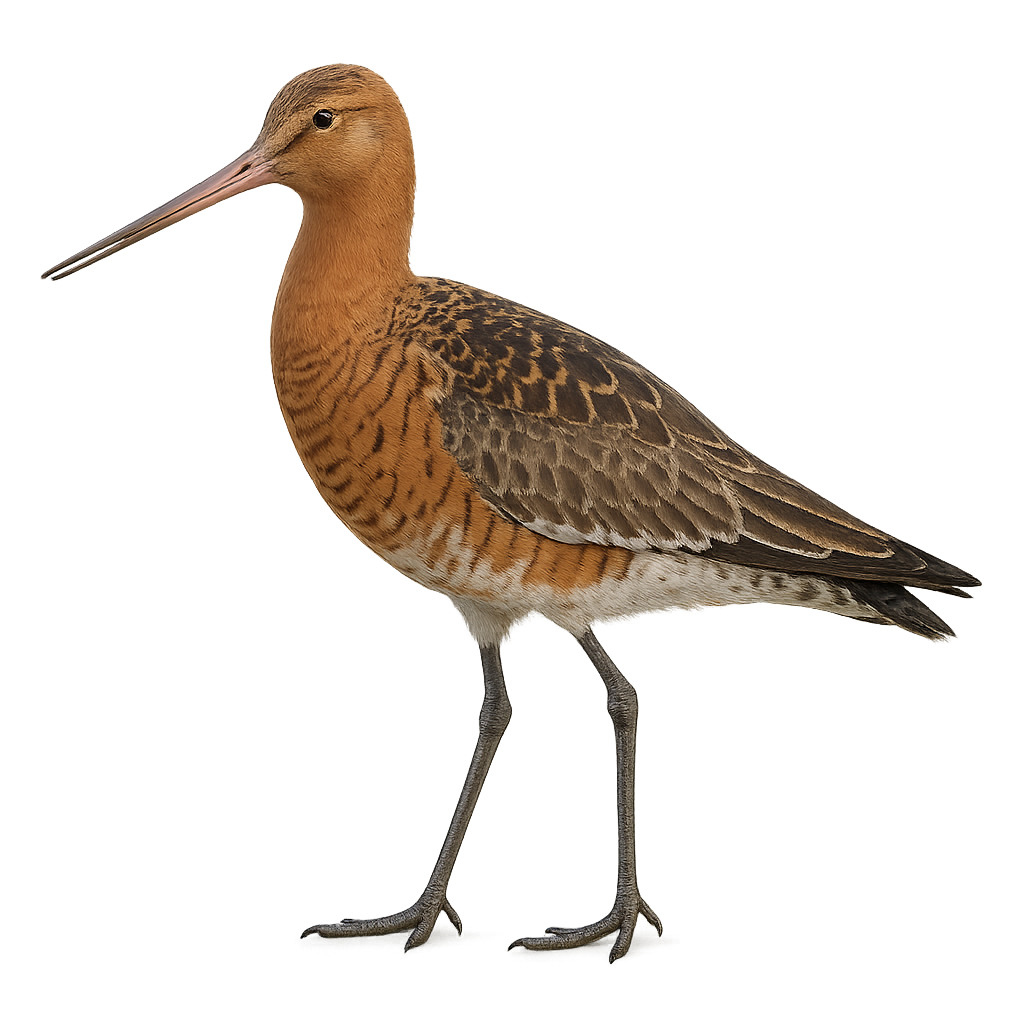Your wildlife photography guide.
Explore the bar-tailed godwit in detail, study its behavior, prepare your shots.
Where to observe and photograph the bar-tailed godwit in the wild
Learn where and when to spot the bar-tailed godwit in the wild, how to identify the species based on distinctive features, and what natural environments it inhabits. The WildlifePhotographer app offers tailored photography tips that reflect the bar-tailed godwit’s behavior, helping you capture better wildlife images. Explore the full species profile for key information including description, habitat, active periods, and approach techniques.
Bar-tailed Godwit
Scientific name: Limosa lapponica

IUCN Status: Least Concern
Family: SCOLOPACIDAE
Group: Birds
Sensitivity to human approach: Suspicious
Minimum approach distance: 30 m
Courtship display: May to June
Incubation: 20-22 jours
Hatchings: May to July
Habitat:
Wetlands, marshes, and tidal flats
Activity period :
Primarily active during the day, with peak activity in the morning and late afternoon.
Identification and description:
The Bar-tailed Godwit is a remarkable wader, easily recognized by its distinctive plumage, which varies from reddish-brown to gray and white, and its long, slightly downward-curved bill. It primarily inhabits coastal areas and wetlands in Europe and Asia, where it feeds on small marine invertebrates, mollusks, and insects, which it detects in the sediment. The Bar-tailed Godwit is a migratory bird, covering great distances between its breeding grounds in the Arctic regions and its wintering areas in more temperate zones.
During the breeding season, the Bar-tailed Godwit engages in particularly interesting nesting behavior, establishing nests on the ground in grasses or boggy areas.
Recommended lens:
300 mm – adjust based on distance, desired framing (portrait or habitat), and approach conditions.
Photography tips:
Approach slowly and discreetly using a telephoto lens to avoid disturbing the redshank, which can fly away quickly if it feels threatened.
Photograph early in the morning or late in the afternoon, when the light is softer and the bird is more active searching for food in marshy areas or mudflats.
Capture moments of foraging: The redshank uses its long bill to probe the mud, creating interesting photographic opportunities, especially when it’s searching for prey.
Be patient: The redshank spends a lot of time feeding or resting on sandbanks or mudflats, so wait for the right moment to capture a natural photo.
Although the redshank is not currently endangered, it is important to respect its natural habitat and avoid disturbing its feeding or breeding activities. Make sure to stay discreet and follow local conservation rules to minimize your impact on this species.
The WildlifePhotographer App is coming soon!
Be the first to explore the best nature spots, track rutting seasons, log your observations, and observe more wildlife.
Already 1 439 wildlife lovers subscribed worldwide

